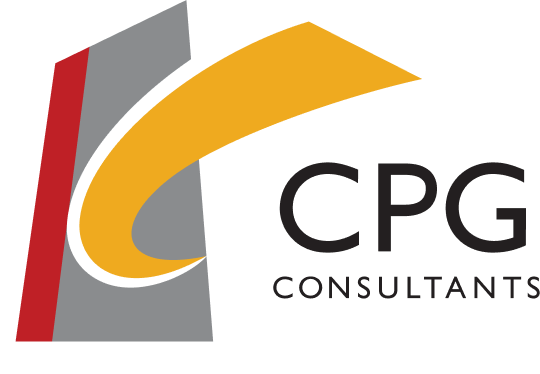
Conversation With… is a series of articles featuring personalities within CPG Corporation and its diverse partners who inspire.
The Built Environment (BE) has greatly transformed and today, we live in a very crowded, urbanised world where peoples’ expectations of the built environment are constantly evolving. In addition, the emergence of COVID-19 has brought about a new understanding of the built environment.
In Singapore, while new technology and opportunities in the industry are transforming the country’s architectural landscape, human talent is a big component of sustaining the development of the industry. With the pandemic as the new norm, professionals in the industry today need to learn to adapt to different conditions and considerations for the future built environment, while sharing knowledge and inspiring the next generation of talents.
We sat down with two of our engineers Ong Yan Xiang (Senior Principal Engineer) and Gavin Chan (Principal Geotechnical Engineer), both of who have been awarded the “iBuildSG Young Leaders’ Advocate” awards earlier this year. The award is part of the Building and Construction Authority (BCA)’s Young Leaders Programme (YLP).
Let’s hear more from Yan Xiang and Gavin on their roles in the industry and their views on the progressive BE sector, especially in the pandemic context.
Editorial: Hello Yan Xiang and Gavin! First of all, congratulations to both for being awarded the inaugural “iBuildSG Young Leaders” Advocate award. Tell us more about your nomination and contributions. What does receiving this award mean to you?
Gavin: Thank you! It all started 4 years ago when a couple of us were nominated for the Young Leaders Programme (YLP). Yan Xiang and I were chosen to go on a boot camp with more than hundred other Young Leaders (YLs) from all over the country. We were tasked with supporting various thrusts of the upcoming Industry Transformation Map. Drawing on CPG’s experience and expertise in multi-disciplinary projects, I was able to contribute to the framing up of DfMA from a macro-economic viewpoint. Part of my recommendations were to focus on outcome-based measurements rather than technology-based prescriptions. Secondly, to reexamine the contracting model for the industry to drive innovation and productivity. As for the award, I see the iBuildSG Young Leaders’ Advocate award as an acknowledgement that I am a contributing member of this industrial network. Together with our colleagues, we build resilience and camaraderie that will help the industry ride through any storms.
Yan Xiang: I feel really honoured to receive this award. The award acknowledges individuals who contributed through one way or another to promote the BE sector, be it activities related to policies or community outreach such as sharing green initiatives and participation in forums on academic curriculum. Many of these activities actually came as a “natural interest” to Gavin and myself, hence we participated actively in many of them, including focus group discussions on the Industry Transformation Map (ITM) and mentoring tertiary students etc. Luckily, our bosses in CPG strongly supported our participation and allowed us to attend these activities during office hours, which also contributed to us being able to receive the award eventually. This award is significant to me as I view it as a start to recognising the efforts of M&E Engineers. Most of the time, engineers deal with back of house matters and majority tend not to “appreciate” these building services unless a fault happens. Hence, this award is an encouragement to engineers like me who may not be visible on the frontline.
Editorial: How has the Built Environment (BE) industry changed over the years since you first joined?
Gavin: I wouldn’t say I have been in the BE sector for very long… but the changes I’ve seen are amazing! In the last 5 years, I saw the transition from 2D to 3D (CAD to BIM), and in the last 2 years, general transformation of the sector with the rapid adoption of DfMA, IDD and green/smart buildings. The BE sector was traditionally seen as a “laggard” industry, I mean we still use the same building blocks the Romans did – concrete! The one that really strikes me is the BIM/IDD transformation. Today, we can log onto zoom meetings and share a 3D model of the building with our layers overlaid. Imagine how we’ll evolve from here!
Yan Xiang: I see more emphasis on sustainability and wellness now. In the past, we designed mainly based on technical requirements. Now, our designs need to consider more environmental factors into consideration, such as energy savings and the well-being of occupants. For example, I see the increasing significance of these new requirements through the Greenmark Platinum rating for many of our projects such as the Customs Operations Command Complex etc. We also adopted more BIM modelling for projects such as Macpherson Nursing Home and Gongshang Primary School etc.
Editorial: How has your work at CPG allowed you to develop as an engineer and aid your contributions to the BE industry?
Gavin: CPG has given me the rare opportunity to experience the BE from a macro, eco-system level as we are a multi-disciplinary company that straddles the entire value chain. It has enabled me to break out of silo thinking and consider my work in the greater scheme of things. For example, I am not just designing structures because my boss tells me or my clients want it. I am designing it to provide value, to resolve challenges and constraints of the physical world through the application of engineering principles and provide service excellence to all around us.
Yan Xiang: I find that CPG provides me with varied exposure to projects of different nature. There are many opportunities and we are always welcomed to take up the challenges. My team members are accommodating and create a cohesive environment that allows me to learn. I was able to experience public and private projects, local and overseas ever since I joined the company. 13 years into the industry, I am now able to handle a variety of stakeholders, such as discuss pros and cons of different types of project implementation with colleagues, stakeholders etc.
Editorial: In what ways do you think the recent pandemic has impacted you as a young engineer working in the BE industry?
Yan Xiang: With the pandemic scenario, our scope widens to include pandemic-resilient designs. The COVID situation taught us to be more flexible than before. Apart from speed-learning on new technologies and guidelines on pandemic-resilient designs, we are expected to keep abreast of works on-site despite a reduction in physical meetings. Because of this, many alternatives and ideas on how we can make the best out of the situation sprung up. For example, site inspections or mock-ups to clients can be remote with just a few persons on-site showing a video walk-through. It was quite funny at first as we need to walk and explain to the camera but this only goes to show interestingly that there can be alternatives to how we do our work.
As my work at CPG revolves around the daily running of projects and managing a team of engineers, the pandemic has allowed me to understand more from the different perspectives of clients, contractors and our colleagues, and how the pandemic has affected them respectively. At the client’s level, we are required to solve their problems without using the excuse that “we can’t do this or that because there is COVID”. At the contractor’s level, we need to ensure projects can be back on track while ensuring their losses are mitigated to a minimum. For our colleagues, each individual has their concerns such as coping with work-from-home.
Through these experiences, I believe that pandemic situations will not deter our works. Instead, it gives us opportunities for more work to be done in ways that we haven’t imagined.
Gavin: The pandemic has transformed the way we work and live, creating a paradigm shift in spatial norms. From a design standpoint, professionals in the BE found the need to evolve quickly and provide answers to the challenging landscape the world now faces. At CPG, we find ourselves facing the same challenges. One of our interesting outputs is the creation of the “CPG Pandemic Resilience Playbook”, a distillation of best practices from our projects. The document aims to guide the BE in adapting to evolving safety and health considerations.
Apart from design philosophy, I felt I’ve experienced first-hand the evolution of the BE brought about by the pandemic. For many decades, the BE has been slow on the uptake of new technologies and tools and what the pandemic has done is force a swift adoption of many applications and concepts that make work safer and more pleasant. Overnight, the need for hardcopy documents evaporated, and many of the administrative processes have been converted into a digital workflow. Not only do these speed things up, it’s much more sustainable as we use much less paper. Perhaps this would pave the way for even bolder concepts such as block-chain?
The pandemic has also improved productivity at work. With social distancing a key in protecting society, the amount of face-to-face meetings has been reexamined out of necessity, and what many found was that we have to prioritise results instead of appearing to be occupied. We find that we could actually function to a good degree under such circumstances. Hopefully, this carries over to the new norm after the pandemic threat has passed. (It’s also more sustainable as we travel less!)
Editorial: Do you have any advice for aspiring young professionals in the Built Environment industry?
Yan Xiang: There are always new things to learn in every project, and every project team is different. There is also a common goal for each project we are working on. My advice would be to stay focused on this goal! At the completion stage, we will surely have lots of “stories” to tell or grumble about, but what’s more important is that we gain job satisfaction and accumulate experiences from what we do. This is also the process of ensuring progression in our industry, as the future of BE lies in our hands.
Gavin: Firstly, find the “what” and “why” you do something and let this be your compass and guide on your BE journey. Secondly, infuse passion and enjoy what you do and you will get better at it. Thirdly, make sure that your job fuels you mentally and physically, after all we still have to pay the bills! But if I had to choose only one, I’d say, find your raison d’être because purpose is the strongest motivator! This is my sixth year in the BE industry, and I am proud of my career option. The BE shapes the world around us, and it bestows a great sense of purpose and fulfilment to see the fruits of our imagination and ingenuity.


